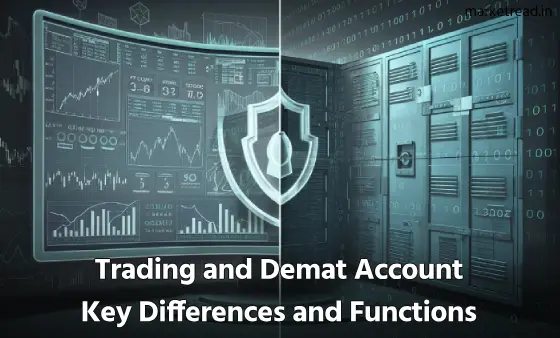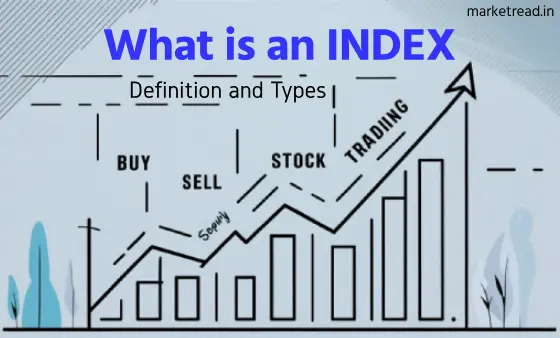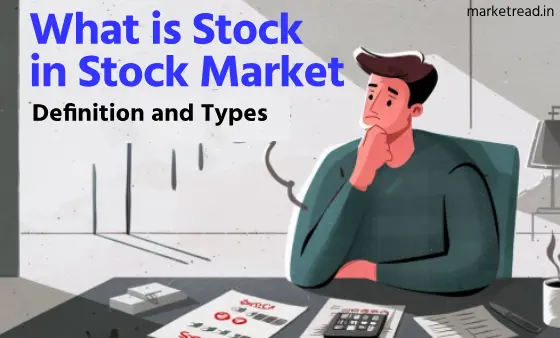Table of Contents
Confused Between Trading and Demat Accounts? Here’s the Simple Truth
Trading and demat accounts are two essential components of the investment and trading process in the financial markets. While they are interconnected, they serve different purposes. Let’s dive into the definitions of trading and demat accounts and explore their differences.
What is a Trading Account?
A trading account is an online platform provided to us by the stockbroker. Through which we can buy and sell various financial instruments like stocks, bonds, commodities and derivatives. It serves as a gateway for investors and traders to participate in the financial markets.
When you open a trading account, you are provided with a unique Trading Identification Number (TIN) or a Client Code, which is required to place a buy or sell order. Through this account, you can monitor stock prices, market conditions, access research reports, analyze charts and even execute trades.
Quick Example
Suppose you open a trading account with a brokerage firm and deposit Rs 10,000 into the trading account. This money is in your account ready to be used to buy stocks, bonds, ETFs, and other financial instruments.
Once you decide what to buy, you place the order through the trading platform offered by your broker. Once the order is executed, the shares you purchased are electronically held in your trading account.
Then, whenever you decide to sell those investments, you will do it through the same trading platform. Hopefully, you’ll be able to sell them at a profit!
What is a Demat Account? Your Digital Locker for Investments
Before the advent of computer technology across the world, we had to maintain many important documents in paper form. But now after computerization, we can manage things in digital form also. A demat account also provides the same facility.
As we do in our lives too, we keep our money in our bank accounts to keep it safe. There is a bank account in our name. However, only monetary transactions take place in a bank account. Similarly, a demat account also works in the same way.
Imagine that a demat account is like a digital safety deposit box specifically for your investments in the stock market. In the past, people held stock certificates as physical pieces of paper. A Demat account, short for “dematerialized account”, is where these investment certificates are stored electronically. In simple words, it is like a bank account for your shares and other securities.
When you buy or sell stocks or other securities, the ownership is also transferred electronically from your demat account to the other buyer. It provides a secure and convenient way to hold and manage your investments. A Demat account also facilitates easy transfer of securities, pledging of shares for loans and receiving dividends and bonuses.
Here’s how it works with an example:
- You decide to buy shares of Company X on the stock exchange.
- When you place an order through a broker (who acts as a middleman between you and the exchange), the shares you purchase aren’t delivered to you physically as certificates.
- Instead, the shares are electronically deposited into your demat account. It’s like transferring money from your bank account to your demat account, but instead of cash, it’s shares.
Trading Account vs Demat Account: What’s the Difference?
While trading and demat accounts are closely related, they serve distinct purposes in the investment process. Here are the key differences between the two:
| Feature | Trading Account | Demat Account |
| Purpose | Buying and selling securities | Holding and managing securities electronically |
| Functionality | Placing orders, monitoring markets, executing trades | Viewing holdings, tracking investments, receiving corporate actions, transferring securities |
| Ownership | Does not hold securities directly | Holds securities electronically |
| Settlement | Settled in cash | Securities credited/debited upon purchase/sale |
Conclusion
- Now, let’s consider that there is a person named ABC who wants to invest in the stock market. So, in this case, ABC first goes to a good stockbroker and opens his trading account.
- After opening the trading account, ABC person buys 100 shares of XYZ company in his trading account. Now, the shares bought in the trading account are not kept by the broker, they are stored in a demat account. Shares in the demat account are deposited in digital form.
- Then, when an ABC person sells those shares later, they are taken out of the demat account and transferred to another person’s or institution’s demat account. This means that shares are transferred from one person to another in digital form without physical certificates.
- In summary, trading allows us the convenience of buying and selling shares, while the demat account saves them digitally. However, both accounts are necessary in the stock market.
FAQs
What is the difference between a Demat account and a Trading account?
A trading account is for Buying and selling securities and a Demat account is for Holding and managing securities electronically
What is the purpose of a trading account?
A trading account is an online platform or a physical account provided by a stockbroker or a financial institution that allows individuals to buy and sell various financial instruments, such as stocks, bonds, commodities, and derivatives.




Terrific post however , I was wanting to know if you could write a litte more on this topic? I’d be very grateful if you could elaborate a little bit more. Cheers!
I discovered your weblog web site on google and examine just a few of your early posts. Proceed to keep up the excellent operate. I simply additional up your RSS feed to my MSN Information Reader. Seeking forward to reading more from you in a while!…